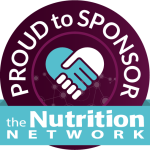All Science No Fiction
Our team of expert scientists have reviewed some of the claims made by other liposomal brands.
A lot of the claims made are unsubstantiated, with little or no supportive scientific evidence.
We will continue to identify myths and misinformation and provide solid scientific “debunking” so you, the consumer, can separate fact from fiction.
Click on the claim to find out more.
Fiction! Viscosity (thickness) is a physical characteristic of liquids. There are many factors effecting a liquid’s thickness such as the use of polymers, gelation agents or solid materials that absorb water such as starch in soup. A generalisation of “thickness” therefore, cannot be used as an indication of a high concentration of liposomes.
Fiction! If the aim is the nutritional value of both ingredients, there is no evidence suggesting each have their own required portions in the normal diet
If the aim is formulation stability, the ratio of raw materials are formulated by experts based on their studies of the optimal proportions for a perfect formulation, both in terms of stability and palatability.
Fiction! Ingredient proportions are formulated by experts based on extensive research and development into optimal ratios for a perfect formulation. A generalisation of “thickness” therefore, cannot be used as an indication of a high concentration of liposomes or indeed a simple quality assay.
Simply impossible. Transit time through the stomach is 1-2 hrs, at which point the nutrient reaches the intestine where absorption takes place. Once absorbed, the nutrient is released and reaches systemic circulation to exert its therapeutic effect. From an efficacy view-point, its is more important for the nutrient to be absorbed in sufficient concentration rather then being digested. The degradation of nutrients by digestion or first-pass effect, before reaching systemic circulation, leads towards loss of action and sub-therapeutic effects.
Fiction! The process of chemical migration/ leaching of plastics into food is dependent on the type of plastic used, contact time, temperature, food type, and the contact area between the plastic container and the food. Therefore, whether your plastic container is safe to reuse depends on what it was designed for and how you are using it.
We use PET bottles, and there are no chemical phthalates or bisphenol A (BPA) in PET plastic. PET plastic does not leach these substances. PET plastic is approved as safe for food and beverage contact by the FDA and similar regulatory agencies throughout the world, and has been for more than 30 years
Fiction! The solubility of Sodium Ascorbate and Ascorbic Acid in water is 620mg and 330mg/ml. The marketing claim is factually incorrect as it is over the solubility of Vitamin C.
Fiction! All oral products have to pass via the digestive system by default. It cant be “bypassed”, an illogical statement.
Scientifically impossible! They state that “A single (bolus) dose of 4 g of Vitamin C is not trivial (approximately 40-fold greater than the minimum Recommended Dietary Allowance) and resulted in appreciably increased circulating concentrations of Vitamin C (~3–30-fold) above baseline” means in comparison to placebo i.e. water. In the same study, the comparison of un-encapsulated (not mentioned whether tablet or capsule) with liposomal Vitamin C showed only 1.5-folds higher plasma levels for Liposomal Vitamin C compared to non-liposomal Vitamin C. This simply cannot be claimed as 30X. In short, the study claimed liposomal Vit-C contents 30X from baseline not from the un-encapsulated Vit-c (tablet or capsule).
Study cited PMCID: PMC4915787
Such claims should only be made if they have conducted any comparative studies with other marketed brands. Every other company claims their product to be most stable, of highest quality and greatest absorption. These vague claims cannot be accepted in the scientific world unless they have been scientifically proven.
Currently, there are no validated experimental approaches for the determination of the particle number-concentration of liposomal and nanoliposomal formulations. It can be calculated using instrumental techniques such as NTA (Nanoparticle tracking analysis) and RMM (Resonant mass measurement). Alternatively, a simple mathematical approach to calculate number of phospholipid vesicles in the form of unilamellar vesicle is as follows;
NVes = [Ming × NA] / [Ntot × 1000]
NVes is the number of delivery vesicles per millilitre, Ming is the molar concentration of ingredients of the vesicles, NA is the Avogadro Number (6.02E23) and Ntot is the total number of ingredients per vesicle.
Ntot can be calculated using the following equation:
Ntot = [4 π (d/2)E2 + 4 π [(d/2)−h)]E2] / a
Where: [4π(d/2)2 ] is the surface area of vesicle’s monolayer, d is the diameter of the vesicle, h is the thickness of the phospholipid bilayer (i.e., ~5 nm), a is the phospholipid head group area and E2 is exponent two (to the power 2). The headgroup area of phosphatidylcholine (a generally used ingredient in the manufacture of lipid vesicles, niosomes, tocosomes, etc.) is about 0.71 nm square. Accordingly, above equation can be simplified to:
Ntot = 17.69 × [(d/2)E2 + (d/2 − 5)E2] in which 17.69 is 4π/a.
There’s no evidence to suggest this company has conducted such analysis.

This is the reason you might not have heard of us.
For the last ten years, our focus and investment has been on the science and innovation of liposomal encapsulation technology.
While others have put their money into marketing and endorsements, lipolife forged partnerships with academia and clinical professionals. Nothing is more important to us than the quality and efficacy of our liposomal formulas. We’re confident in our expertise. We’re proud of the products we’ve developed, using nutrients in their active forms.
It’s about the product, not the promotions.

